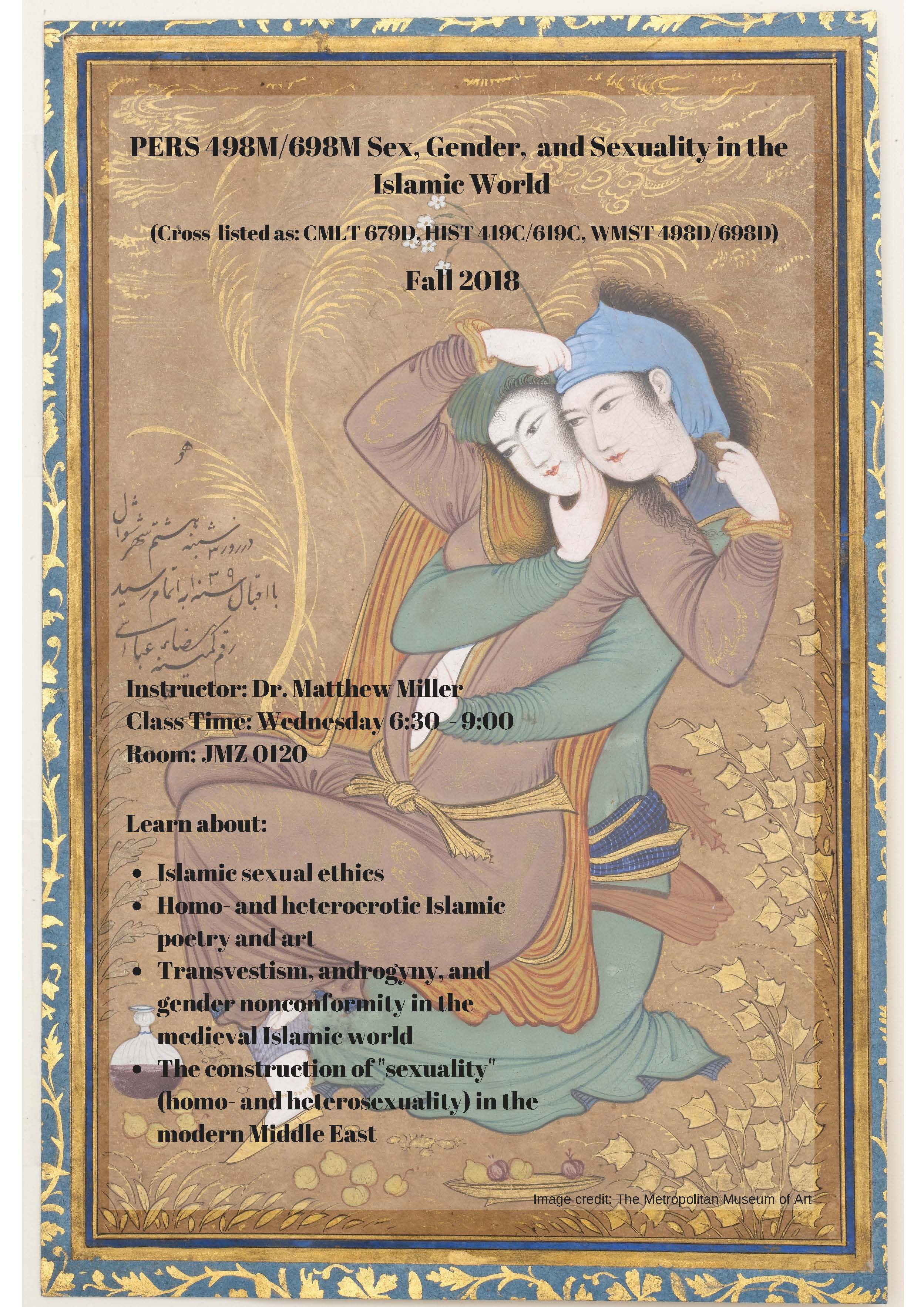
Sex, Love, and Desire in Persian Poetry will provide students with a survey of the permutations of desire—sexual to sacred, heteroerotic to homoerotic—in Persian literature from its earliest works (e.g., Shah-Nameh, Vis and Ramin) to modern “new poetry” (she’r-e now) (e.g., Farrokhzad, Shams). The course will be divided up into four units: (1) romantic epic; (2) Sufi “sacred” love literature; (3) bawdy verse and erotic advice literature; (4) modern “new” love poetry. The chronological and generic breadth of the course will enable us to study the ways in which authors of various times and places adapt and transform amorous themes for their own time and literary aims. We will also study the changing “politics of desire” (e.g., the highly political ways in which modern readers and literary critics have responded to the manifest homoerotic and other non-heteronormative forms of desire in premodern Persian literature). In addition to the readings/topics on the syllabus, students will have the opportunity to engage in their own independent research on a topic of their own choice related to Persian literature (in consultation with the instructor), which they will report on in the form of a class presentation and final project. The course neither presupposes nor requires any knowledge of the Persian language or prior coursework in Persian literature.
Please contact me if you are interested in reviewing the full syllabus.
